One of the most frequent issues of urban gardeners and amateur farmers has become how garden gadgets help in growing vegetables. Gardeners are resorting to modern tools that ease their work in a limited space, a changing climate, and the necessity to find efficient methods. Smart watering systems and portable soil testers are the only devices that can save time and help grow vegetables more likely to become successful in any small backyard or any apartment balcony. Whether applied by beginners or experienced growers, the operation of these devices leads to a more sustainable, efficient, and higher-yielding harvesting experience.
The Role of Technology in Modern Gardening
Gardening has been a subject of technology in recent years. Smart devices, automated systems, and data-driven tools support what used to be considered a purely manual task. The garden gadgets are meant to minimize the element of guesswork and enable growers to have greater control of how their plants are doing. An automatic watering system could be considered an example, as it would make sure that the plants receive the correct amount of water, and a soil tester would allow determining whether the soil contains enough nutrients.
These advances enable the saving of resources and increase the yield for gardeners. Planting vegetables is no longer limited to farms; people living in cities may also develop successful rooftop gardens or balcony vegetable beds with smart devices. The integration of technology with traditional knowledge fosters an equilibrium between gardening efficiency and resource sustainability.
Why Garden Gadgets Are Important for Vegetable Growing
Vegetables need good attention at all the levels- starting from germination till harvesting. Unmonitored, small problems like a lack of water, pest attack, or lack of nutrition in the soil can ruin weeks of work. Garden gadgets are assistants that constantly monitor such states and offer remedies.
An example is a moisture sensor that prevents overwatering, which is one of the major causes of root rot. Similarly, UV grow lights can be used to replace sunlight in darker areas and leave your vegetables with the range necessary to do photosynthesis. These tools offer enhanced reliability and reduce the inherent stress of gardening, providing valuable support during the initial learning curve.
Above all, garden gadgets can help even those with a hectic lifestyle to cultivate vegetables with ease. Automation allows for remote management of garden needs, ensuring plant health is maintained even during periods of grower absence. This flexibility has made the cultivation of vegetables more affordable to the people of the world.
Essential Garden Gadgets for Vegetable Growers
Garden gadgets are available in numerous forms, and each gadget has a particular purpose. Others are aimed at automation or protection, whereas some are meant to monitor. The table below presents the simplified list of the most important tools:
| Gadget | Main Use | Benefit |
| Soil Tester | Checks pH & nutrients | Ensures healthy soil |
| Smart Irrigator | Automatic watering | Saves time & water |
| LED Grow Light | Provides artificial light | Boosts plant growth |
All of these tools are instrumental in vegetable development. A soil tester provides data on pH and alkalinity, allowing growers to quickly adjust soil conditions for optimal crop growth.
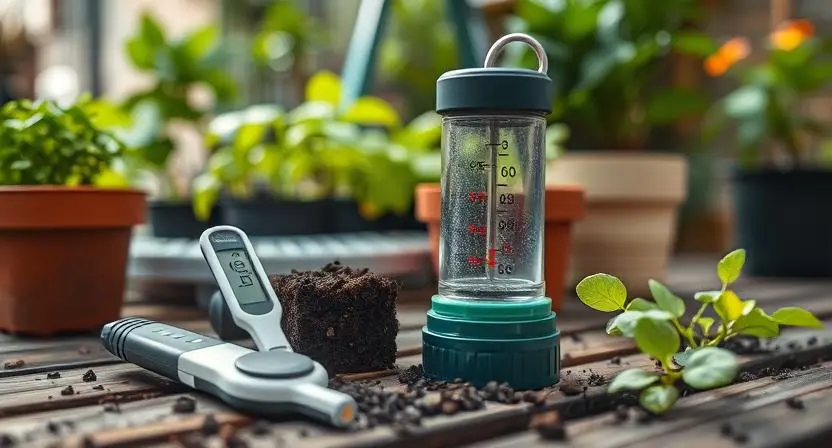
Smart Watering Systems: Saving Time and Resources
One of the most important aspects of planting vegetables is watering. Excessive water may cause roots to be suffocated, whereas a lack of water may cause drying. Smart watering systems are able to maintain the optimal balance with the help of sensors that test soil moisture. These machines automatically switch off or on depending on the requirements of the plants.
In the case of vegetable farmers, it guarantees stability in terms of water hydration and avoids wastage. Furthermore, these systems are particularly helpful to people who live in water-scarce areas. They also minimise the loss of evaporation by water being delivered to the roots. The outcome is healthier vegetables with stronger root systems and high yields.
By automating the watering process, growers can significantly reduce the time dedicated to manual irrigation, while ensuring plants remain optimally hydrated and healthy.
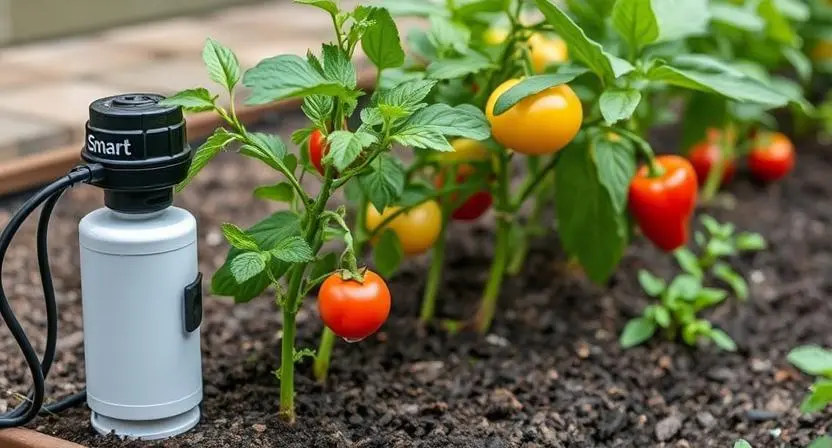
Soil Testers: Understanding the Foundation of Growth
Plant life depends on soil as its foundation, and knowing the condition of the soil is important when it comes to growing vegetables. Soil testers are small devices that can determine the PH, moisture, and nutrient level. Without such information, most gardeners would be left to rely on guesswork, and this can lead to low yields.
An example is that leafy greens such as spinach and lettuce require acidic soil, but root vegetables such as carrots can survive at neutral pH. A soil tester gives real-time data to enable the gardeners to make modifications to the fertilizers or soil conditioners. It is especially useful to urban gardeners who might have limited soil volume in containers where they are growing vegetables.
Soil testers eliminate the need for specialized knowledge, providing science-based readings that enable even novices to give vegetables the precise environment required for prosperity. Science-based readings will allow even novices to give vegetables the precise environment they require.
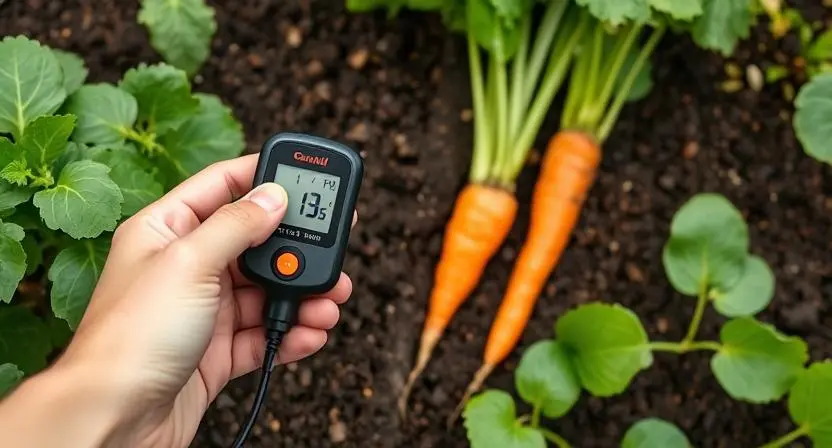
LED Grow Lights: Extending the Growing Season
Vegetable needs enough sunlight to produce, and not all the garden areas are well exposed. This issue is resolved by using LED grow lights that imitate natural sunlight. These lights offer a certain wavelength that vegetables require to grow and bloom.
Among the greatest benefits of grow lights is the fact that they extend the growing period. Vegetables such as tomatoes, peppers, and even herbs can be grown in the house, even in the winter when the day length is reduced. The contemporary LED grow lights are also efficient in power consumption, thereby using less electricity but generating quality light.
Grow lights can transform the fantasy of homegrown vegetables into a reality among residents living in city apartments or in the shadowed areas. They can also enable the gardeners to experiment with crops that may not otherwise grow in their area.
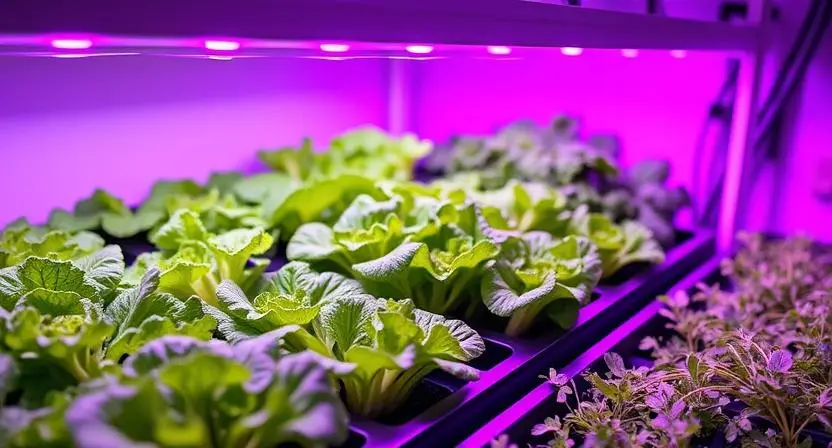
Pest Control Gadgets: Keeping Vegetables Safe
One of the largest dangers to vegetable gardens is pests. Conventional pesticides may be detrimental to the environment, and they are not necessarily safe for edible plants. Fortunately, the latest garden devices provide ecologically friendly methods of dealing with pests.
An example is ultrasonic pest repellers, which deter insects and rodents using sound waves without damaging the crops. Gardeners are notified of pest population increase by the use of sticky traps that have sensors. There have also been gadgets that are equipped with camera technology and which identify certain pests and recommend safe treatments.
These inventions are useful in keeping the vegetables safe in a natural way, eliminating the use of dangerous chemicals. This approach results in healthy, pesticide-free produce and contributes to maintaining ecological balance within the garden environment.
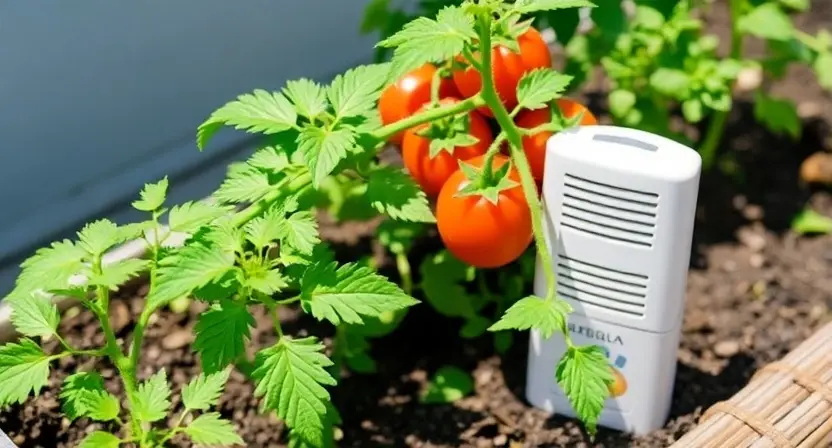
Portable Greenhouses and Climate Gadgets
The weather is a big factor in vegetable gardening, and any sudden change is destructive. Combined with climate-control gadgets, portable greenhouses will give vegetables a controlled environment in which they can grow.
Growing conditions are usually monitored with smart temperature and humidity units. In the case of overheating, these gadgets can be automatically ventilated. Equally, the small heaters can be switched on during colder weather.
This is what enables the cultivation of vegetable crops throughout the year, irrespective of the weather conditions outside. Portable greenhouses, as a solution, present the opportunity for urban residents to make maximum use of limited space and preserve crops in case of sudden rain, storms, or frost.
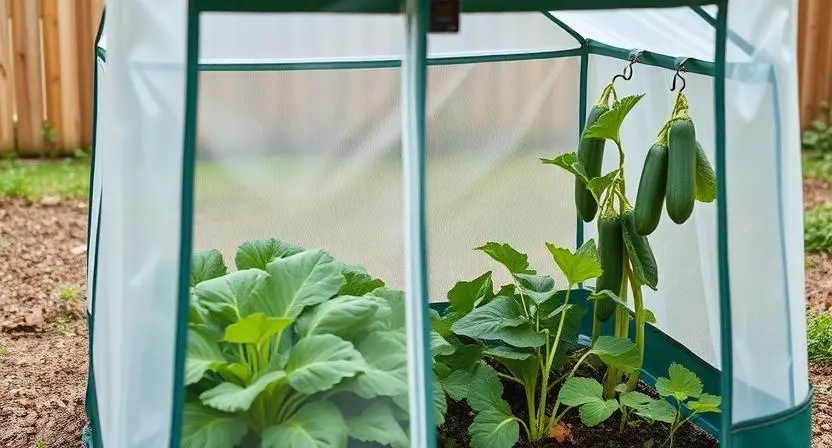
Simple DIY Gadgets That Help Vegetable Growers
Garden equipment does not necessarily have to be costly and high-tech. There are numerous DIY solutions developed by gardeners that are practical and cost-effective. As an example, water can be conserved by home-made drip irrigation systems made of recycled bottles. Likewise, the use of low-cost bamboo stick trellis supports can be used to assist in vegetable growth, such as beans and cucumbers, to grow effectively.
These DIY solutions demonstrate that cost-effective, creative implementation can significantly enhance gardening efficacy. They also foster sustainable operations through the recycling of materials, which otherwise could go into waste. Although the use of high-tech devices is convenient, DIY solutions are more personalized and offer hands-on participation.
Comparing Garden Gadgets: Which One to Choose?
There are far too many possible choices when it comes to gadgets in the garden, and the question arises as to which of them are essential. A rapid comparison table is given below to make decisions:
| Gadget | Best For | Price Level |
| Soil Tester | Beginners | Low |
| Smart Irrigator | Busy people | Medium |
| Grow Light | Indoor gardens | Medium-High |
This comparison demonstrates that gadget selection should be aligned with the grower’s experience level and production goals। Novices may prioritize basic soil testing, while advanced growers may invest in automation for maximized yield. When making the right decisions, it is possible to prevent unnecessary costs and, at the same time, get the advantages of technology.
How Garden Gadgets Support Sustainable Living
We are living in a world where food security is a problem; thus, sustainability is gaining relevance. Garden gadgets are a significant contribution to sustainable vegetable growing. These tools enable gardeners to produce food responsibly by conserving water, minimizing the use of chemicals, and properly managing nutrients.
With the help of gadgets, urban agriculture helps decrease the use of food transportation over long distances. This reduces carbon footprints as well as providing families with fresher vegetables directly out of their gardens. Also, automation reduces wastage because resources are only provided when they are required by the plants.
Widespread adoption of these technologies facilitates the shift from gardening as merely a hobby to an active solution supporting global sustainability goals.
Future of Gardening with Smart Gadgets
Gardening is moving towards more sophisticated, intelligent, smart systems in the future. And already we have technologies to link to smartphones and deliver real-time notifications about the health of the soil, pest infestations, or pet watering schedules. In the near future, it is possible to apply artificial intelligence in predicting plant-related diseases even before they appear.
Robot helpers are also being designed to help in weeding, planting, and harvesting. The innovations are intended to help ease the physical burden and make work more efficient. The environmental effects of gardening will be reduced further with the incorporation of renewable energies like solar-powered devices.
The future integration of these technologies promises greater yields, healthier crops, and a significantly higher standard of sustainable gardening practices.
Final Thoughts
The integration of smart devices has fundamentally shifted how garden management is approached. Tools like soil testers, smart irrigation systems, and LED grow lights minimize guesswork, automate critical functions, and enable crop production in limited or indoor spaces. These innovations offer both amateur and professional growers the ability to create more reliable, high-yield gardens year-round. Ultimately, adopting garden technology leads to more sustainable practices, resource conservation, and increased success in urban and small-scale vegetable cultivation.


